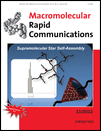
Journal of Bioresources and Bioproducts
Scope & Guideline
Harnessing bioresources for sustainable development.
Introduction
Aims and Scopes
- Biomass Utilization and Biorefinery Processes:
Research in this area involves the conversion of various biomass types into valuable bioproducts, including biofuels, bioplastics, and other bio-based materials. This includes the study of thermochemical, biochemical, and enzymatic processes. - Development of Biodegradable and Sustainable Materials:
The journal emphasizes the innovation of materials that are both biodegradable and derived from renewable resources. This includes studies on bioplastics, composites, and new materials with enhanced properties for industrial applications. - Characterization and Application of Natural Fibers:
Investigations into the properties and applications of natural fibers from various sources, including agricultural residues and forest products, are central to the journal's scope. This includes their use in composites, textiles, and packaging. - Environmental Remediation and Sustainability:
Research focused on the role of bio-based materials in environmental remediation, such as wastewater treatment and pollution control, is a key area. This includes the study of biochar, biosorbents, and other materials for environmental applications. - Innovative Applications in Biomedical Engineering:
The journal highlights the development of bio-based materials for biomedical applications, including drug delivery systems, tissue engineering scaffolds, and antimicrobial agents derived from natural sources.
Trending and Emerging
- Nanotechnology in Biomaterials:
There is a notable increase in research focusing on the application of nanotechnology in the development of bio-based materials, particularly in enhancing the performance and functionality of natural fibers and biocomposites. - Bio-based Solutions for Environmental Challenges:
Emerging themes highlight the development of bio-based materials aimed at addressing environmental issues, including pollution remediation and waste management, showcasing the role of biotechnology in sustainability. - Integration of Circular Economy Principles:
The trend towards circular economy principles is becoming more prominent, with research focusing on the valorization of waste materials and the development of processes that minimize waste and maximize resource use. - Smart and Responsive Materials:
There is an increasing interest in developing smart materials that can respond to environmental stimuli. This includes research on stimuli-responsive polymers and composites that have applications in various high-tech sectors. - Hybrid and Composite Materials for Enhanced Performance:
The trend towards hybrid materials that combine multiple bio-based components for superior performance is rising. This includes the use of nanofillers and other additives to improve mechanical, thermal, and barrier properties.
Declining or Waning
- Traditional Wood Processing Techniques:
Research focused solely on conventional wood processing methods seems to be declining. This shift may be due to the increasing interest in advanced materials and nanotechnology applications that offer enhanced properties and sustainability. - Single-Use Bioplastics:
The focus on single-use bioplastics is diminishing as the industry moves towards more sustainable solutions that emphasize recyclability and multi-use applications. This reflects a broader trend towards reducing plastic waste. - Basic Characterization Studies without Application Context:
Studies that primarily focus on the basic characterization of materials without linking to practical applications are becoming less frequent. There is a growing expectation for research to demonstrate real-world applications and impacts.
Similar Journals

Gels is a distinguished, peer-reviewed journal published by MDPI, focusing on the innovative field of gels and their myriad applications across disciplines such as bioengineering, biomaterials, and organic chemistry. Since its inception in 2015, this Open Access journal has provided a platform for researchers to disseminate cutting-edge findings, enabling wider visibility and impact for their work. Based in Switzerland, Gels has firmly established itself within the academic community, achieving notable recognition as evidenced by its recent Q1 ranking in Polymers and Plastics, and multiple Q2 placements in related categories, demonstrating its relevance and importance in the field. The journal serves as a vital resource for professionals and scholars aiming to engage with the rapidly evolving research landscape surrounding gel technologies, making significant contributions to sustainable materials, drug delivery systems, and much more. With its commitment to Open Access, Gels ensures that research findings are readily accessible to all stakeholders, fostering collaboration and advancement in science and engineering fields.

Carbon Resources Conversion
Advancing Research in Carbon Resource TransformationCarbon Resources Conversion is a prominent interdisciplinary journal that focuses on the innovative aspects of carbon resource utilization, aiming to advance research and applications in catalysis, fuel technology, and materials science. Published by KEAI PUBLISHING LTD, this Open Access journal, established in 2018, has rapidly developed a reputation for its high-quality research, evident from its impressive quartile rankings in 2023, including Q2 in Catalysis and Q1 in both Fuel Technology and Materials Science (miscellaneous). With its dedicated editorial board and rigorous peer-review process, Carbon Resources Conversion serves as an essential platform for researchers, professionals, and students striving to address contemporary challenges in energy and materials sustainability. The journal's strong Scopus rankings reaffirm its influence and accessibility within the scientific community, making it a vital resource for advancing the knowledge and application of carbon resource conversion processes.

Biomaterials Advances
Connecting Researchers to the Cutting Edge of BiomaterialsBiomaterials Advances is a premier journal published by Elsevier, dedicated to the rapidly evolving field of biomaterials. Established in the United Kingdom, this open-access journal aims to disseminate high-quality, peer-reviewed research that explores innovative biomaterial designs and their applications in bioengineering and biomedical engineering. With an impressive 2023 impact factor reflected in its Q1 rankings across multiple categories—including Bioengineering, Biomaterials, and Biomedical Engineering—Biomaterials Advances stands out as a critical platform for scholars and practitioners faced with advancing technologies and methodologies in the realm of materials science. Covering a broad range of topics, from biocompatibility to tissue engineering, this journal provides an inclusive forum for researchers seeking to contribute to the field. Its Scopus rankings further affirm its position as a leading resource, with notable standings in Biomedical Engineering (Rank #13), Biomaterials (Rank #8), and Bioengineering (Rank #11), all within the top percentiles. Researchers and students alike are encouraged to contribute and engage with the latest findings and innovations in biomaterials through this valuable publication.

Chem
Fostering Interdisciplinary Dialogue in ChemistryChem, published by CELL PRESS, is a renowned academic journal that has rapidly established itself as a leading platform for cutting-edge research in diverse areas such as biochemistry, chemical engineering, materials chemistry, and environmental chemistry. Released under the ISSN 2451-9294, this esteemed journal has achieved an impressive Q1 category ranking across multiple disciplines in 2023, highlighting its significant impact and prominence within the academic community. With a strong focus on innovative studies and interdisciplinary approaches, Chem fosters a vibrant dialogue among researchers, professionals, and students, making it an indispensable resource for those seeking to advance their knowledge and contribute to the evolving field of chemistry. As an open access journal, it aims to democratize knowledge, ensuring that critical research is accessible to a global audience. With its headquarters based in Cambridge, MA, it continues to lead the charge in the dissemination of pivotal findings that shape our understanding of chemical sciences.

ChemBioEng Reviews
Exploring the Synergy of Chemistry and BiologyChemBioEng Reviews is a premier academic journal dedicated to advancing the fields of biochemistry, bioengineering, and chemical engineering. Published by WILEY-V C H VERLAG GMBH, this journal serves as an essential platform for researchers and professionals seeking to disseminate groundbreaking insights and innovations. With a remarkable impact factor and a solid reputation, it is ranked in the top quartile (Q1) across multiple disciplines, including Biochemistry, Bioengineering, and Industrial and Manufacturing Engineering. The journal's comprehensive scope covers the synthesis, analysis, and application of bioengineered solutions, making it a vital resource for anyone involved in process chemistry and technology. With an unwavering commitment to high-quality scientific discourse from 2014 to 2024, ChemBioEng Reviews is not only pivotal for the academic community but also contributes to industry advancements in filtration, separation processes, and the intersection of chemical and biological engineering.

CELLULOSE CHEMISTRY AND TECHNOLOGY
Innovating Through Cellulose ChemistryCELLULOSE CHEMISTRY AND TECHNOLOGY, published by EDITURA ACAD ROMANE, is a pivotal journal in the fields of materials and organic chemistry. With a unique focus on cellulose and its derivatives, this journal explores innovative research and developments that contribute to sustainable materials science. Established in 1972, it boasts a rich history of publication, aligning closely with advances in green chemistry and bio-based materials. Recognized with a Q3 ranking in both Materials Chemistry and Organic Chemistry, the journal provides a platform for researchers to disseminate valuable findings that push the boundaries of cellulose applications. Despite its non-open-access status, it remains an essential resource for academics and professionals seeking authoritative content in cellulose science. With relevant insights into the changing dynamics of materials research, CELLULOSE CHEMISTRY AND TECHNOLOGY serves as a critical link for ongoing discussions in the scientific community, proposing solutions and exploring new avenues for cellulose utilization.

MACROMOLECULAR RAPID COMMUNICATIONS
Driving the Future of Organic Chemistry ForwardMACROMOLECULAR RAPID COMMUNICATIONS, published by WILEY-V C H VERLAG GMBH in Germany, is an esteemed journal dedicated to the rapid dissemination of high-quality research in the fields of materials chemistry, organic chemistry, and polymers and plastics. With a remarkable 2023 impact factor securing its place in the prestigious Q1 category across three key disciplines, the journal ranks impressively within the top quartiles of the Scopus metrics, standing at 36th in organic chemistry and 35th in polymers and plastics. Although the journal does not offer open access options, its informative depth and innovative research make it an invaluable resource for researchers, professionals, and students seeking to stay abreast of the latest developments in macromolecular science. Covering a broad spectrum of topics from fundamental research to applications, MACROMOLECULAR RAPID COMMUNICATIONS aims to foster collaboration and inspire further advancements within the scientific community.

Vietnam Journal of Chemistry
Exploring the Frontiers of Chemical ScienceVietnam Journal of Chemistry, published by WILEY, is a prominent academic journal that serves as a platform for the dissemination of innovative research in the field of chemistry. With its ISSN 0866-7144 and E-ISSN 2572-8288, this journal has made a significant impact on the global scientific community, evidenced by its 2023 Scopus ranking as #274 in the General Chemistry category and a commendable percentile of 32nd. The journal, categorized in the Q3 quartile for miscellaneous chemistry subjects, aims to foster communication among chemists from Vietnam and around the world, encouraging collaboration and the exchange of cutting-edge knowledge. While it currently does not offer Open Access options, the Vietnam Journal of Chemistry is committed to contributing valuable insights from its coverage years spanning from 2018 to 2024, making it a worthy resource for researchers, professionals, and students dedicated to advancing the field of chemistry. Based in the United Kingdom, it stands as a testament to the vibrant research endeavors emerging from Vietnam and beyond.

ACS Macro Letters
Pioneering Insights in Inorganic and Materials ChemistryACS Macro Letters, published by the American Chemical Society, is a leading journal in the fields of Inorganic Chemistry, Materials Chemistry, Organic Chemistry, and Polymers and Plastics. Established in 2012, this journal has swiftly ascended to the forefront of chemical research with an impressive reputation, as evidenced by its 2023 Scopus rankings placing it in the first quartile across multiple categories. The journal's objective is to disseminate timely and concise articles that advance the study of macromolecules and their applications, making it an essential resource for researchers, professionals, and students alike. With a focus on fostering innovation and facilitating collaboration within the chemical community, ACS Macro Letters presents a robust platform for scientists to share their groundbreaking findings. Being based in the United States, it serves as a central hub for global discourse in the chemical sciences, although it does not currently offer Open Access options. The journal's commitment to high-quality content is further underscored by its prestigious impact factor and acceptance into elite academic quartiles, signifying its influence and importance in shaping future research.

ZEITSCHRIFT FUR PHYSIKALISCHE CHEMIE-INTERNATIONAL JOURNAL OF RESEARCH IN PHYSICAL CHEMISTRY & CHEMICAL PHYSICS
Connecting Theoretical and Experimental FrontiersZEITSCHRIFT FUR PHYSIKALISCHE CHEMIE-INTERNATIONAL JOURNAL OF RESEARCH IN PHYSICAL CHEMISTRY & CHEMICAL PHYSICS, published by WALTER DE GRUYTER GMBH, is a highly regarded platform for researchers in the field of physical chemistry and chemical physics. With an ISSN of 0942-9352 and an E-ISSN of 2196-7156, this journal serves as a vital resource for the dissemination of original research, critical reviews, and insightful discussions that span theoretical and experimental investigations. Recognized for its quality, it holds a Q2 classification within the 2023 quartiles of Physical and Theoretical Chemistry and ranks 72nd out of 189 in the Scopus database, placing it in the 62nd percentile. The journal’s extensive publication history, originating from 1943, showcases its long-standing commitment to advancing the understanding of complex chemical phenomena. Although it currently does not offer open-access options, it continues to attract contributions from leading experts worldwide, making it essential reading for professionals, researchers, and students dedicated to pushing the frontiers of chemical science. The journal is located in Berlin, Germany, at Genthiner Strasse 13, D-10785 Berlin, Germany.